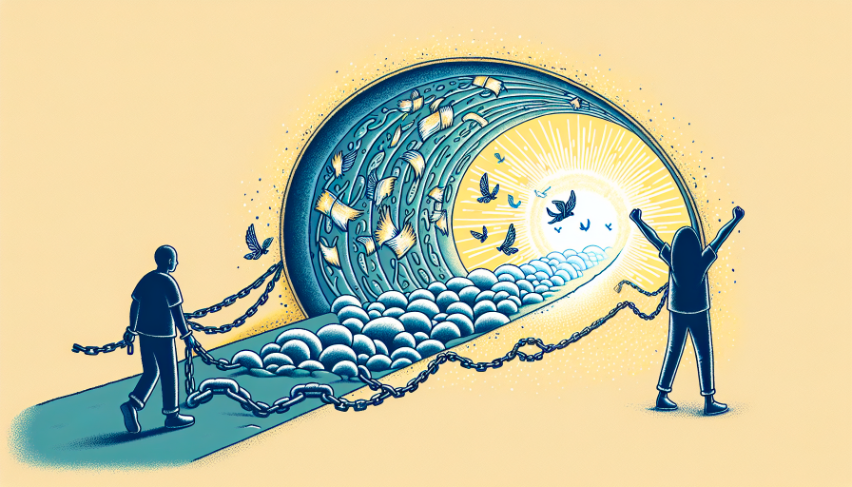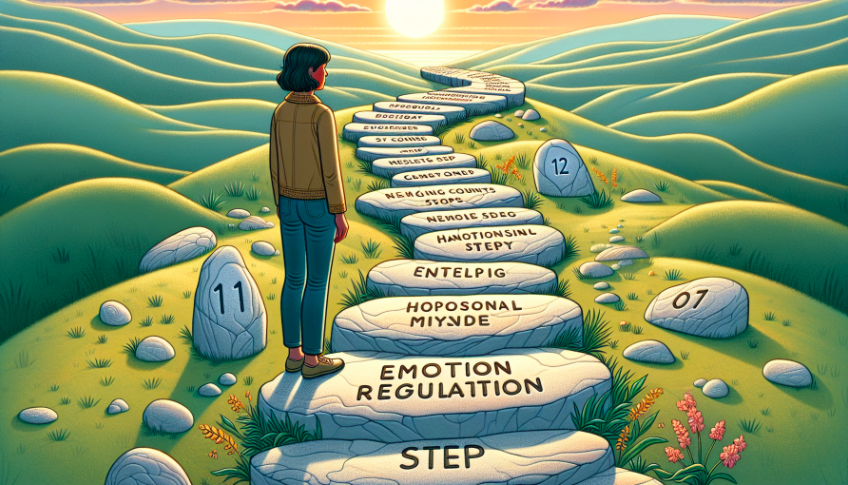If you are on a journey of personal growth, healing, and transformation, you may find yourself asking how to truly heal and create change in your life. One key aspect that is often overlooked but essential to true change is emotional tolerance. In this blog, we will explore what emotional tolerance is, how to increase it, and how it can help you create the life you dream of.
Table of Contents
- What is emotional tolerance & how to do it?
- An example
- Step 1: Create awareness
- Step 2: Discover your protection mechanisms
- Step 3: Emotional release & integration
- Step 4: Presence
- Step 5: Choose different behavior
- Safety, Regulation & Personal power
This blog is generated by AI based on our video about this topic. You can watch our video below. Prefer to read on? Just scroll down below the video.
What is emotional tolerance & how to do it?
Emotional tolerance is the ability to create a space or pause between external stimuli and your reaction to them. When you have experienced trauma, deep shame, or feelings of unworthiness, it is common to be defensive or reactive to the world. This unsafety that you perceive in the world triggers your insecurities, fears, and traumas, causing you to want to run away from yourself and avoid facing your emotions.
Increasing your emotional tolerance level requires staying present with whatever you experience inside your body. The more you can sit with and be present with your emotions, the more you can create a pause before reacting to the world. This shift allows you to consciously choose new behaviors and reactions, rather than being driven solely by past experiences.
An example
For example, let’s say your trigger is self-doubt. When you’re triggered, you may start doubting yourself and your abilities, which prevents you from taking action or sharing your ideas. Recognizing this mechanism allows you to redirect your focus to what is happening inside your body and investigate the suppressed emotions that are being triggered. By understanding and working through these emotions, you can begin to heal and increase your emotional tolerance.
Download Our Free Starter Pack
& Start Your Journey of Self-discovery, Healing, Transformation & Empowerment!
Step 1: Create awareness
The first step in increasing your emotional tolerance is to create self-awareness. Reflect on your past, your negative childhood experiences, and how they have influenced who you are today. Consider your role in your family system, your relationship with your parents, and their relationship with their parents. Take note of your insecurities, fears, and traumas, as well as your attachment style and how you respond to the world.
Step 2: Discover your protection mechanisms
Once you have gained self-awareness, it’s important to understand the protection mechanisms you have created to keep yourself safe. These mechanisms may include people pleasing, perfectionism, avoidance, domination, selfish behavior, anger, or self-sabotage, among others. Recognize how these mechanisms have helped you in the past, but also how they may no longer serve you.
Step 3: Emotional release & integration
The next step is to work with the suppressed emotions in your body. This may involve somatic healing techniques to understand, feel, release, and integrate these emotions. By addressing your emotional body, you can create a sense of safety within yourself, which in turn makes the world feel safer. This process of healing allows you to regulate your emotions and respond from a place of wholeness and healing.
Step 4: Presence
As you progress in your healing journey, the next step is to stay present with your triggers. Rather than trying to understand or fix them, simply recognize them and allow them to flow through your body. This practice of staying present creates a pause between stimulus and response, empowering you to choose a different reaction or behavior.
Step 5: Choose different behavior
By increasing your emotional tolerance and staying present with your triggers, you gain personal power and the ability to choose new behaviors. You can respond differently to the world and to yourself, fostering peace, clarity, and connection. This conscious choice to respond from a place of healing and safety helps you create the change you long for.
Safety, Regulation & Personal power
Creating a healthy emotional tolerance level requires deep self-knowledge and understanding. By exploring your cognitive and emotional layers, as well as your protection mechanisms, you can connect with your vulnerabilities and respond in ways that keep you safe. From this place of safety and healing, you regain personal power, allowing you to create new ways of responding to the world and to yourself.
BP’S MEMBERSHIP
The Ultimate Platform for Self-discovery, Healing,
Transformation & Empowerment
Become a member & gain access to all our exclusive tools for €49,95 per year only!
Need Help?
Away from traditional (talk) therapy and coaching we have created new tools for self-discovery, healing, transformation and growth. Our tools follow a holistic approach where we combine somatic and emotional healing practices with psychological theory & guidance.
If you resonated with the insights shared in this blog post and are seeking guidance on your healing journey, here are 3 ways we can help you:
1. Shop In Our Webshop
In our webshop you can find all our tools sorted by theme, visit our shop here.
2. Become A Member
Become a member of our online platform & community for Self-discovery, Healing, Transformation & Empowerment: Heart Journey.
Gain instant access to all our Meditations, Somatic Exercises, Parts Work Exercises, Videos, Visualizations and much more for just €7,95 per month or €49,95 per year!
Start your 5 day free trial here.
3. 1-on-1 Guidance
Feel in need of personal guidance? We offer 1-on-1 guidance that transcends classic talk therapy & coaching, speaks directly to the emotions and trauma stored and suppressed in the body, and gets to the root of mental, emotional & physical suffering. Just click here to book a free intake.
Related Blogs

Healing the Wound of Unworthiness
In a world that often demands conformity and suppression of our true selves, the wound of unworthiness can be a deep and pervasive challenge. This collective wound, rooted in the patriarchal, oppressive, and emotionally immature systems we've inherited, can leave us...

Perfectionism: How to Heal & Overcome it
Perfectionism is often viewed as a character trait, something to be proud of. However, the truth is that perfectionism is not a desirable quality, but rather a coping mechanism developed to deal with deeper emotional wounds and insecurities. It is a way of sabotaging...

Emotion Regulation: A Step-by-Step Guide
In this blog, we will explore a practical guide to help you regulate your emotions and work through suppressed feelings. Emotion regulation is key to healing and ultimately transforming yourself and your life. Through a series of 10 steps, you can learn to navigate...

Anger as a Catalyst for Change
Anger is often seen as a negative emotion that we need to suppress or overcome. However, in reality, it can be a powerful tool for self-expression and authenticity. It is not something that we need to heal away or grow out of. Our anger is our truth, and it serves as...

The Wound Of Unworthiness: Why You Don’t Love Yourself
Living in our current society often pushes individuals into a survival mode, where they feel the need to suppress their true selves in order to fit in and adapt. This constant pressure to survive and meet societal expectations can lead to a lack of emotional...



